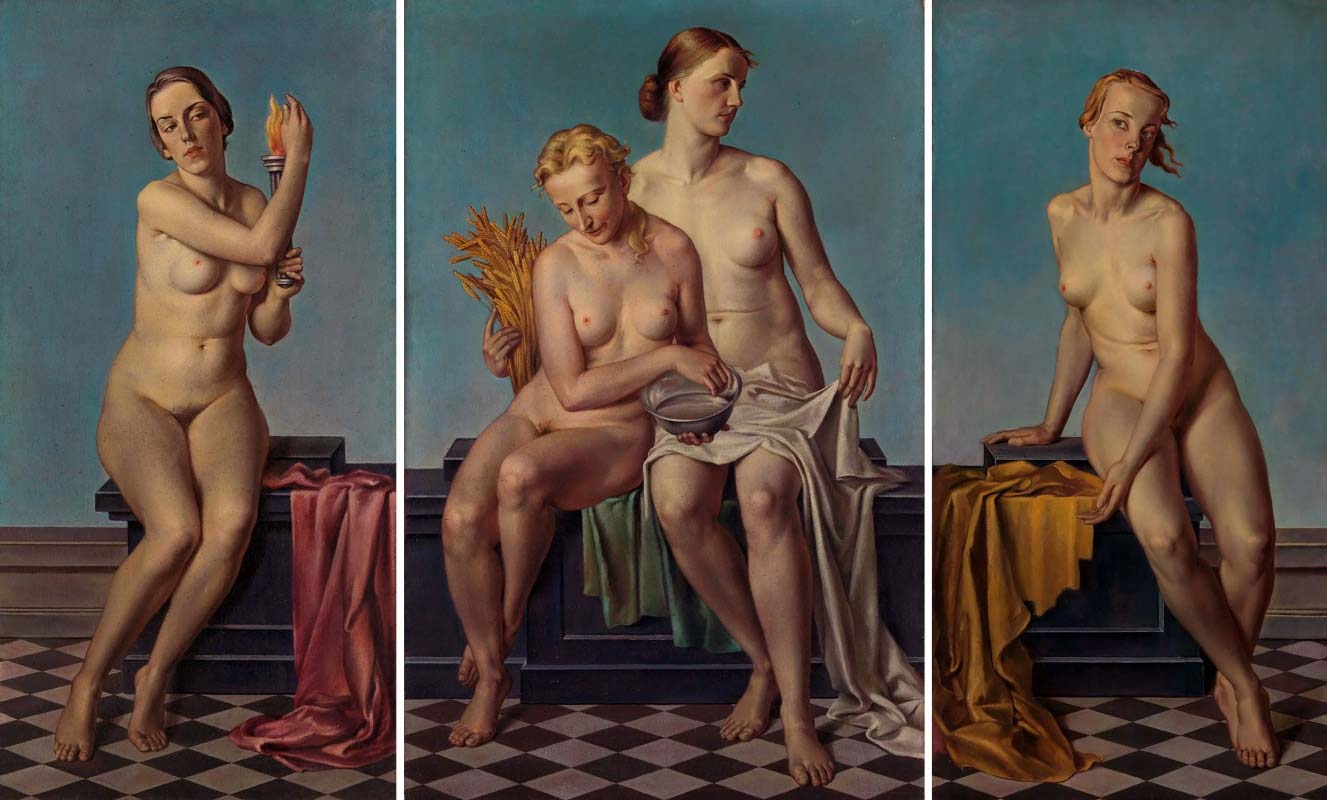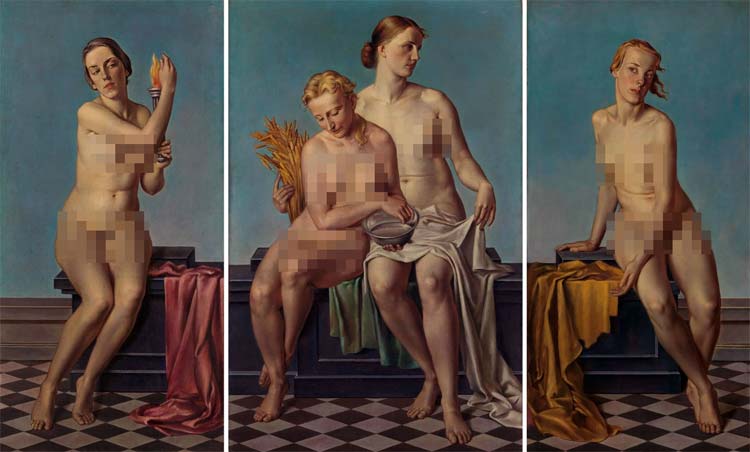Back-and-forth between Georg Baselitz, one of the greatest living artists and winner of the Praemium Imperiale in 2004, and the Pinakothek der Moderne in Munich around a painting by Adolf Ziegler (Bremen, 1892 - Varnhalt, 1959). The object of contention is a painting, Vier Ele mente (“The Four Elements”) displayed in an exhibition at the Munich museum. Entitled Mix & Match, the exhibition, scheduled to run from Sept. 15, 2022 to Jan. 14, 2024, compares some 350 works from the collection with never-before-seen juxtapositions. However, according to Baselitz, the work should be removed as “Nazi propaganda.” The painting depicts four white, blond and naked women, symbolizing the four elements.
Ziegler was one of the most fervent Nazi artists, and served as president of the Reich Chamber of Fine Arts at the time of the infamous Degenerate Art Exhibition, of which Ziegler himself was curator. Toward the end of World War II, however, he took positions critical of Adolf Hitler’s conduct, a circumstance that cost him deportation to the Dachau concentration camp in 1943, where he spent a month of imprisonment, and resignation from his position as president of the Academy of Fine Arts. After the war, since his art was inextricably linked to the Nazi regime, it was impossible for him to continue his career, and he lived retired in Varnhalt the last years of his life.

Although the painting does not directly evoke political themes (although the women embody the Aryan somatic type cherished by the Nazi regime), the triptych is indeed one of the best-known works of Nazi art, and at the time of the Third Reich it was widely reproduced in magazines and postcards, and a tapestry taken to the Universal Exhibition in Paris in 1937 was also made from it. The artist, as the museum’s official record states, “linked the ancient cosmological theme of the four elements to the National Socialist concepts of race and femininity through the ideally beautiful Nordic women.” Baselitz called for the painting’s removal by writing to the director general of the Bavarian Art Collections, Bernhard Maaz, and Bavaria’s art minister, Markus Blume. “That triptych,” says Baselitz, “offends everything around it! It is shocking that Nazi propaganda should be allowed in this sleazy way in a Munich museum.” Baselitz, who called Ziegler “a henchman of Adolf Hitler and Joseph Goebbels,” finds the sight of the work inside the museum unbearable.
The institute’s response was not long in coming: Maaz himself, along with collections curator Oliver Kase, while saying they respect Baselitz’s views, reject the idea of removing the work from public view. “We believe that critical reactions and discussions are important and essential in the context of Nazi art,” they explained. “This exchange assumes that Nazi art can be seen through the originals. The continued concealment of problematic art never leads to critical thinking, but only to the perpetuation of taboos.” According to Maaz and Kase, “our generation needs to find its way to a historically objective engagement with Nazi art beyond moralistic accusations, such as the one that happily began a few years ago and is enjoyed by experts and wide swaths of the public.” The museum refers to the fact that Ziegler’s triptych is extensively commented on in the itinerary. In particular, the aim of exhibiting the painting is precisely to show the ideological and manipulative standardization of the body that the Nazi regime continually pursued, and against which the art of the avant-gardes, with their diversity of views, stood as a bulwark of tolerance and openness.
Minister Blume also responded to the letter, saying that “the words of Georg Baselitz, one of the most important contemporary artists, obviously carry weight,” and asking the museum to address the artist’s arguments. Baselitz, who was born in 1938 in Deutschbaselitz (his real name is Hans-Georg Kern), lived as a teenager in a Germany devastated by the destruction of World War II and is very sensitive to the subject, as also attested by his art in which the concept of destruction has important implications.
 |
| That work is Nazi: Baselitz calls for removal of painting, museum refuses |
Warning: the translation into English of the original Italian article was created using automatic tools. We undertake to review all articles, but we do not guarantee the total absence of inaccuracies in the translation due to the program. You can find the original by clicking on the ITA button. If you find any mistake,please contact us.